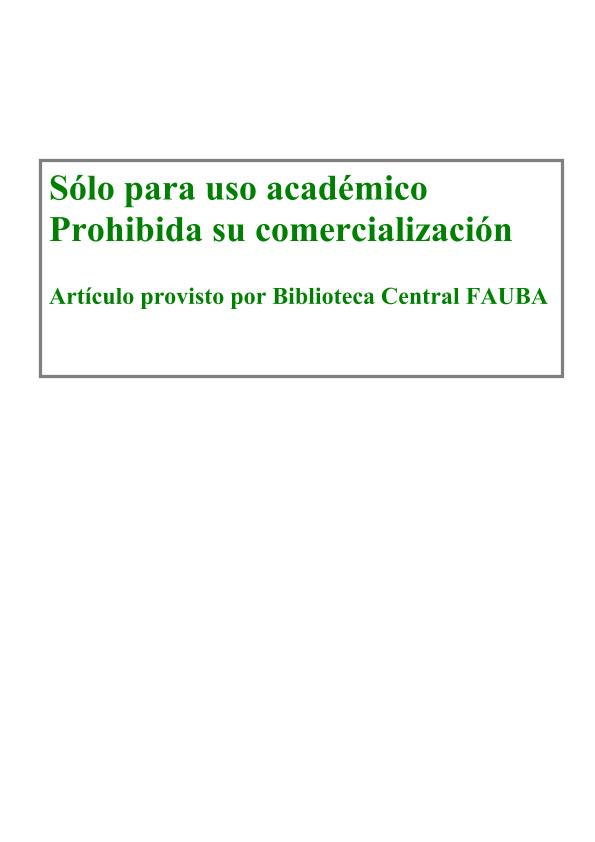Artículo
Development of a regional soil productivity index using an artificial neural network approach
Fecha de publicación:
10/2013
Editorial:
Amer Soc Agronomy
Revista:
Agronomy Journal
ISSN:
0002-1962
Idioma:
Inglés
Tipo de recurso:
Artículo publicado
Clasificación temática:
Resumen
Soil productivity indices represent ratings of the potential plant biomass production of soils. Inductive approaches determine productivity based on inferred effects of soil properties on yield. Conversely, deductive approaches use yield information to estimate productivity. Our objective was to compare the performance of both types of productivity indices for assessing regional soil productivity for wheat (Triticum aestivum L.) yield in the Pampas. Soil data from soil surveys and interpolated climate information were utilized. Wheat yield data from a 40-yr period and representing ?45 Mha were used. Inductive productivity indices showed a low correlation with observed yield (R2 < 0.45, P = 0.05). The best performance of deductive empirical methods was attained using a blind guess option, but soils could only be rated when yield data were available. Yield models based on the neural network approach had good performance (R2 = 0.614, root mean square error [RMSE] = 548 kg ha–1) and was used for regional productivity index development. This index could be extrapolated to soils for which yield data are not available, and its validation with yield averages was optimal (R2 = 0.728, P = 0.05). Regional high productivity was achieved for combinations of medium to high levels of soil organic C and soil available water storage capacity variables, which showed a positive interaction. This methodology for assessing soil productivity based on an empirical yield-based model may be applied in other regions of the world and for different crops.
Palabras clave:
Suelos
,
Productividad
,
Materia Orgánica
,
Redes Neuronales
Archivos asociados
Licencia
Identificadores
Colecciones
Articulos(OCA PQUE. CENTENARIO)
Articulos de OFICINA DE COORDINACION ADMINISTRATIVA PQUE. CENTENARIO
Articulos de OFICINA DE COORDINACION ADMINISTRATIVA PQUE. CENTENARIO
Citación
de Paepe, Josefina; Alvarez, Roberto; Development of a regional soil productivity index using an artificial neural network approach; Amer Soc Agronomy; Agronomy Journal; 105; 6; 10-2013; 1803-1813
Compartir
Altmétricas




